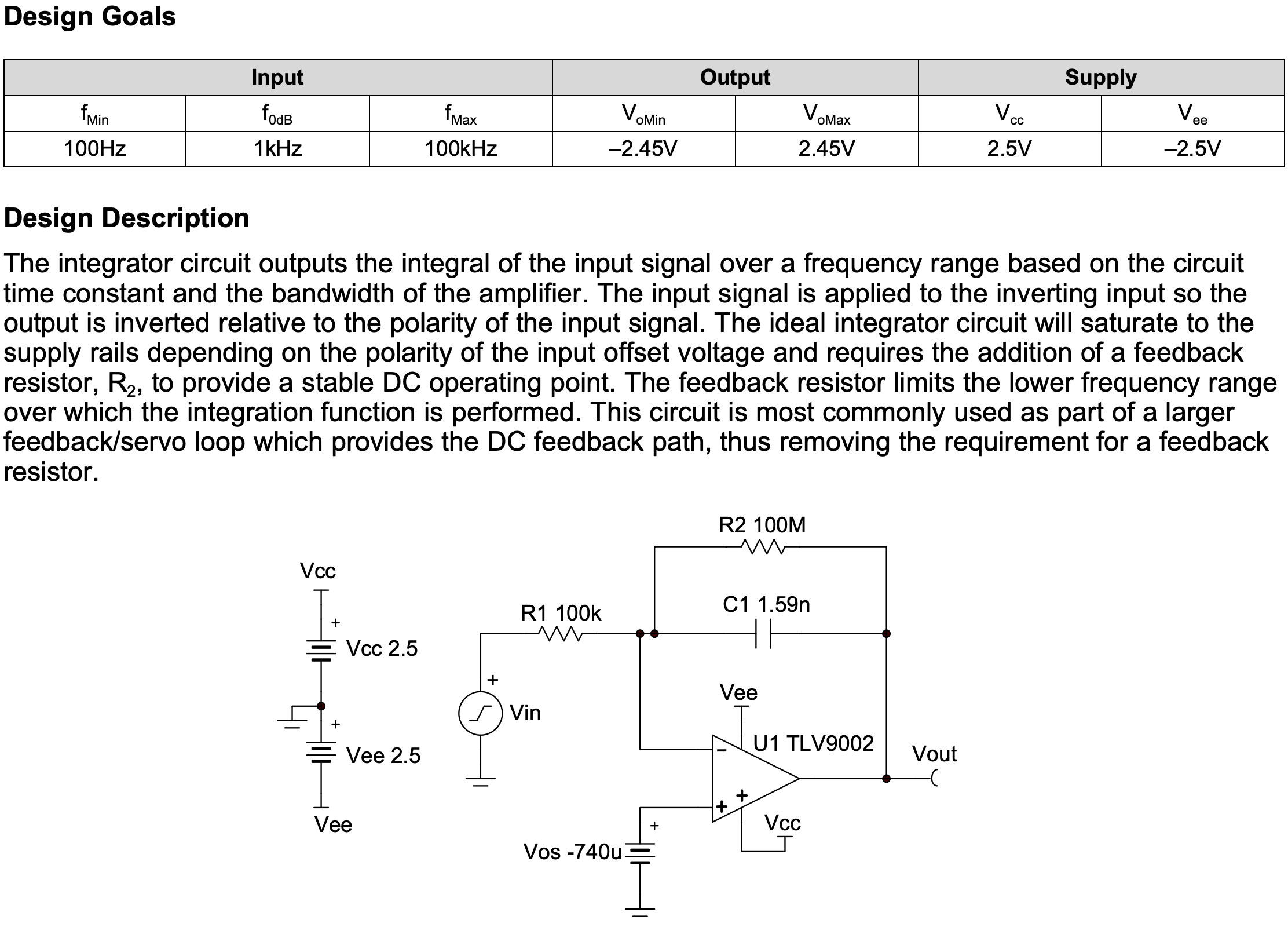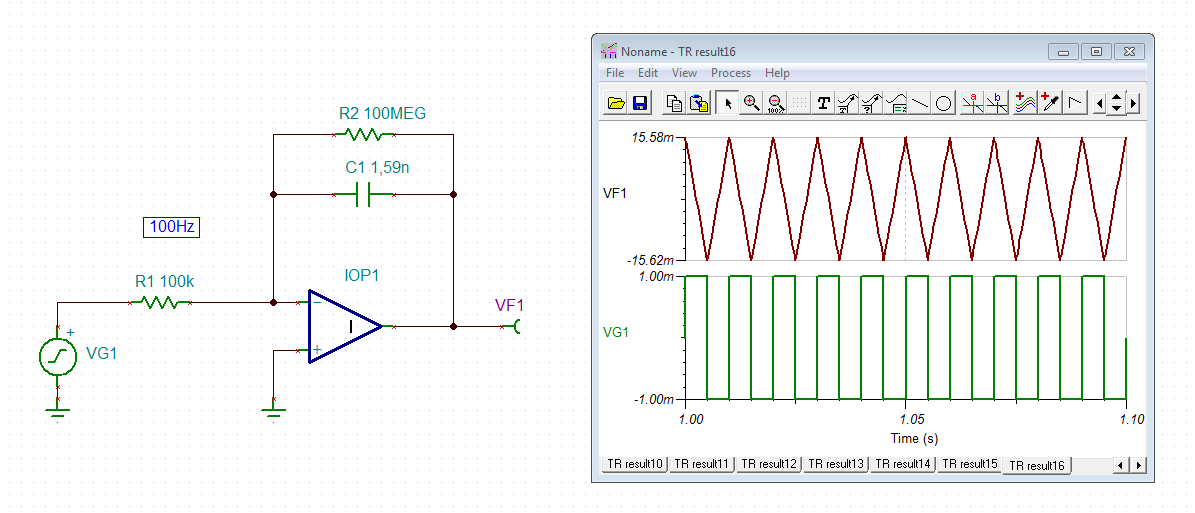Other Parts Discussed in Thread: UA741
Dear team
May I ask about the sboa275a? http://www.ti.com/lit/an/sboa275a/sboa275a.pdf
Instead of using TLV9002, I used UA741 for the experiment.
When supplying +15/-15V power and 1kHz square wave, the output looks like a triangle.
If the R2 is removed, the triangular output stays near to the 15V power supply voltages.
May I ask
Q0. "The ideal integrator circuit will saturate to the supply rails depending on the polarity of the input offset voltage"
Is this the case; ideal integrator meaning no R2 resistor? Then without R2, why this becomes saturated?
Q1. "requires the addition of a feedback resistor, R2, to provide a stable DC operating point."
May I ask the meaning of this "stable DC operating point"?
Q2. "The feedback resistor limits the lower frequency range over which the integration function is performed."
Why does the feedback resistor limit only the lower frequency range?
Thanks for the help.







